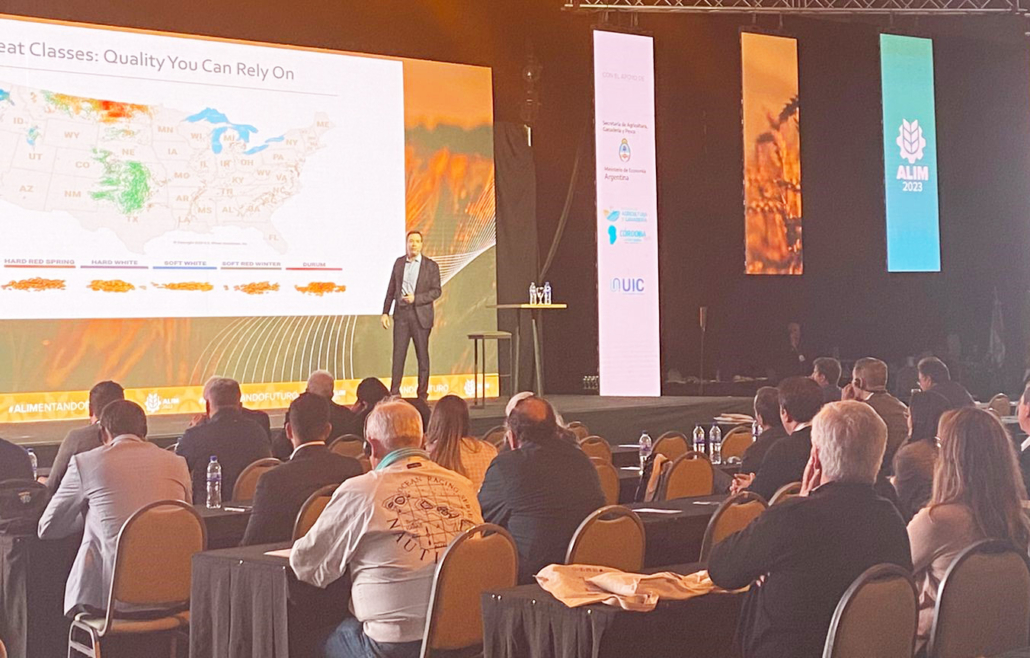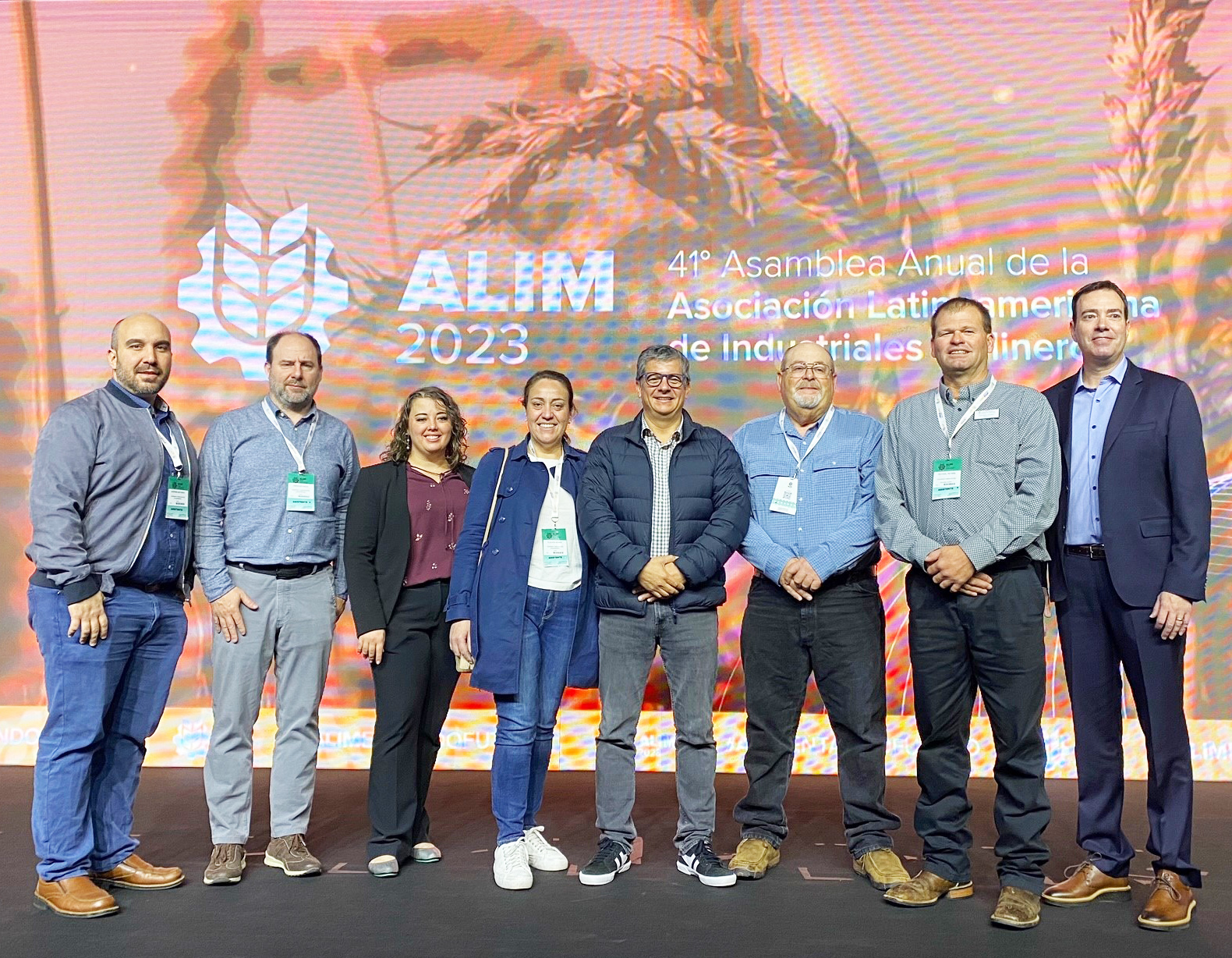ALIM Meeting Provides U.S. Wheat a ‘Connection’ to Latin American Millers
U.S. Wheat Associates (USW) Chairman Michael Peters and USW Board Member Dana Tuckness discovered there was plenty of interest in what they had to say during the annual Assembly of the Latin American Association of Miller Industrialists (ALIM), held Oct. 29 – Nov. 1 in Cordoba, Argentina.
“When someone learned we were U.S. wheat farmers, they were really eager to hear about our farming operations and, of course, about our crop,” said Tuckness, an Oregon producer who was attending his second consecutive ALIM. “It was nice to meet some new people in the industry and also reconnect with people I had met last year, when the event was in Peru. The connections made during these meetings is an important part of doing business.”

USW Vice President of Overseas Operations Mike Spier presents at the 2023 ALIM meeting in Cordoba, Argentina.
An Effective Platform
Nearly 600 wheat buyers from the region were in attendance in Argentina, and the meeting once again served as an effective and efficient platform for U.S. wheat industry representatives to engage with key contacts.
USW Vice President of Overseas Operations Mike Spier presented as part of a solid lineup of speakers and informational sessions. Staff from USW offices in Santiago and Mexico City also participated, meeting with existing customers and potential customers of U.S. wheat.
“The important thing about ALIM is that it provides a valuable opportunity to connect with our regional wheat buyers,” said USW Regional Director Miguel Galdos. “The topics that fill up the program are of great interest to U.S. wheat and to the broader milling industry. The presentations this year were focused on visions for the future of the regional milling industry – looking at factors such as economics, politics, and commercial trends, and how they impact the Latin American region.”
‘What’s Coming Next’
Peters, an Oklahoma farmer, described ALIM as a “chance to learn about what’s coming next” in the world of flour milling, as least as it applies to Latin America.
“Like everywhere else in the world, there are challenges, including some economic challenges in some countries,” Peters said. “But there are also growing opportunities for U.S. wheat, so it was nice to listen and learn about what’s happening today and the future plans of millers and bakers.”

Nearly 600 wheat buyers attended this year’s ALIM event. USW staff from Portland, Mexico City and Santiago took the opportunity to meet with customers and potential customers of U.S. wheat.
Future Wheat Foods
The development of new wheat foods – along with new methods of making wheat foods – were part of the discussion.
“As a soft white wheat producer, I was naturally interested in anything involving the class I grow,” said Tuckness, who noted that hard red winter (HRW), soft red winter (SRW) and durum wheat continue to draw interest in the region.. “There was a lot of talk about blending of classes, and the millers seem to have a lot of interest in that, because bakers in Latin America are looking at new breads and new ways to make bread.”


